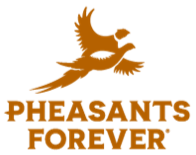Restoring Arizona’s Colorado River Basin Conservation Area RCPP
With over $24 million in NRCS Regional Conservation Partnership Program (RCPP) funding awarded (read the PRESS RELEASE), this landscape-level effort is focused on real, practical improvements that support both the land and the people who rely on it. Program partners—AACD & Conservation Districts, Pheasants & Quail Forever, and the Arizona Game & Fish Department—are working directly with producers to get conservation dollars on the ground and bring back healthy native plant communities and strengthen working lands.
Project goals include:
Restore and enhance rangelands and forest lands across Arizona.
Remove invasive woody vegetation to reduce catastrophic wildfire risk.
Improve soil health, water quality, and grazing efficiency.
Increase water availability and support watershed resilience.
Strengthen wildlife habitat, including connectivity corridors.
Who Can Apply
Permittees on state or federal lands
Private land owners
How to Apply
Download the PDF application, fill it out, and email it to:
Application Period
Applications accepted year-round beginning December 15, 2025!
First application period closes January 30, 2026
Second application period closes: TBD
After You Apply
Once your application is submitted, it will be reviewed, your eligibility will be determined, there will be a site visit conducted by our technical team, and your application will be ranked.
Eligible Practices
-
Brush Management
BMPs: 314, 384, 643
Brush management is used to maintain or re-establish native perennial plant communities to restore carbon stocks while also increasing resilience to disturbances, such as wildfire, that would result in even greater carbon losses. The practice can also support critical habitat for wildlife, improve wildlife corridors/connectivity, enhance resilience to severe weather events, protect soils, and improve water quality and hydrology.
Additional practices to support the primary practice of brush management include Woody Residue Treatment (384) (brush piles/piles for burning) and Restoration of Rare or Declining Habitat (643) (one-rock dams, riparian monitoring, declining habitat monitoring).
-
Water Developments
BMPs: 533, 516, 614, 636, 642, 645
Strategic placement of water developments allows for better dispersal of wildlife and livestock while limiting their use in sensitive riparian areas. This will reduce grazing/use intensity and soil compaction, allowing for healthier uplands and improved water quality in riparian areas.
Water developments include Pumping Plant (533) (solar conversions; supports 528), Livestock Pipeline (516) (supports 528), Watering Facility (614) (storage and troughs; supports 528), Water Harvesting Catchment (636) (supports 528), and Water Well (642) (supports 528).
-
Fencing
BMP: 382
Installing wildlife-friendly fencing will allow for better habitat connectivity and increased genetic diversity. Fencing supports livestock rotation and may also be used to limit livestock from riparian areas to prevent habitat and water quality degradation.
-
Prescribed Grazing
BMP: 528
Prescribed grazing can vastly improve habitat and feed conditions. By resting pastures, overused areas are allowed to become productive with desirable forage species.
FAQs
Will I have to give access to partners in perpetuity?
No. Partners will only access your property during and for the purpose of the project.
After I submit my application, when will I hear from someone?
You will hear from someone within 30 days of the application period closing.
What about overlapping projects/practices?
Producers cannot receive funding for practices already covered under another contract or agreement. However, if a separate parcel is not included in that existing agreement, funds may be used on that parcel.
Can program funds be used towards archaeology?
Yes! You can apply to have funding support cultural resource surveys through this program.
Have other questions? Email them to programs@aacd1944.com





